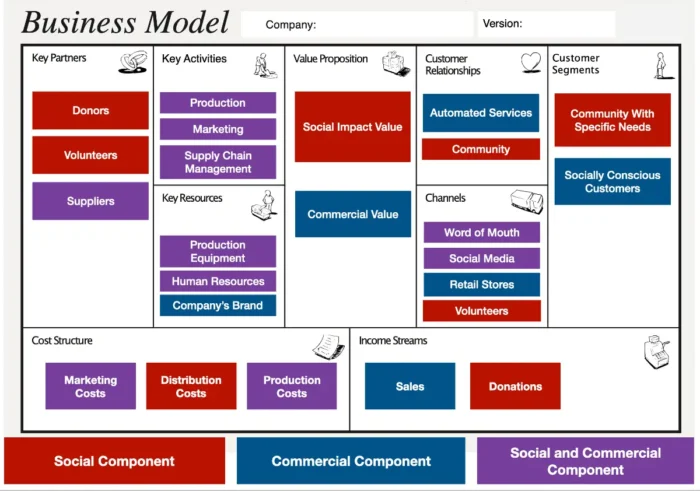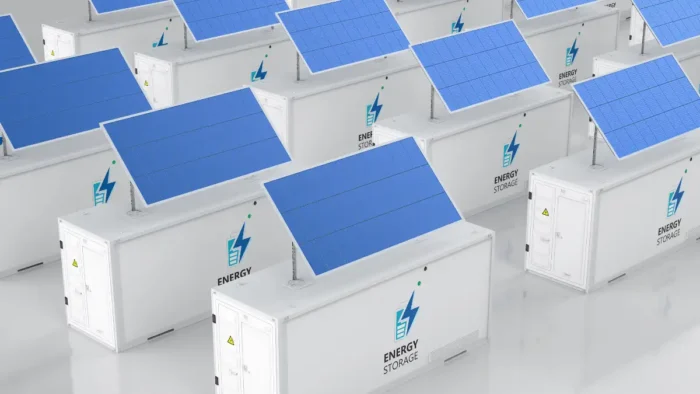In recent years, the world has become more aware of the importance of projects that add value to collective welfare. This has led both individuals and companies to bet more and more on social entrepreneurs and social entrepreneurship to improve the quality of life in the community.
A social enterprise’s main objective is to solve society’s various problems. Therefore, we can affirm that social entrepreneurship is an initiative that always seeks positive social change.
Social entrepreneurs aim to generate positive impacts in areas such as community and economic development. They address the challenges in developing sustainable business models and strategies that focus on the triple bottom line of people, the environment, and profit.
Do you want to become a social entrepreneur but don’t know where to start?
In this article, we not only tell you how you can make this type of entrepreneurship a reality. We also tell you how it differs from an economic venture.
📖 Key takeaways
- The key difference between entrepreneurs and social entrepreneurs is their focus: Is it for profit or improving society, moving it from the status quo to ensure community development?
- There are three social entrepreneurship models and many areas of interest, from focusing on social categories to corporate social responsibility.
- Business models for social companies are different from those for commercial companies. It’s important to differentiate the commercial from the social components inside the model.
Entrepreneurship vs. Social Entrepreneurship: What’s the Difference?
Traditionally, businesses were classified into two main categories: for-profit and non-profit.
For-profit enterprises are established with the primary goal of generating profits. In contrast, non-profit enterprises are set up to serve a social or charitable cause without the intention of making a profit. The distinction between these two types of organizations is fundamental, as their objectives, operational models, and financial structures differ significantly.
But in the last decade, more variations of entrepreneurship have emerged, such as for-profit enterprises that support the mission of non-profit organizations, businesses designed for social impact, and businesses completely oriented towards the environment and environmental protection.
What is an Entrepreneurship?
Entrepreneurship involves taking a business idea to the real plane to establish a lucrative opportunity. In other words, the entrepreneur’s ultimate goal is to obtain an individual economic benefit by creating a company.
What is Social Entrepreneurship?

Social entrepreneurship is a type of entrepreneurship with multiple definitions and forms. When discussing social entrepreneurship, we often mean a for-profit enterprise with two goals: achieving profitability while providing a return to society and developing society.
Gregory Dees gives the following definition of social entrepreneurs:
Social entrepreneurs play the role of agents of change in the social sector by:
- Accepting a mission to create and maintain social value (not just private value),
- Recognizing and relentlessly pursuing new opportunities to serve that mission,
- Engaging in a process of continuous innovation, adaptation, and learning,
- Acting boldly without being limited by resources available at that time and
- Exhibiting a heightened sense of accountability to the constituencies served and for the outcomes created.
As you can see, a social entrepreneur is a person who makes positive changes in the social sector.
In its most basic definition, social entrepreneurship is a model that seeks to generate a positive impact and benefit society and the planet by creating products or services. Clearly, it is not a specific sector since this type of social entrepreneurship can come from any work area. The role of corporate social responsibility in social entrepreneurship is crucial as it integrates businesses with governmental and social organizations to address social and environmental problems.
Related: 10 Reasons Being An Entrepreneur Is Better Than Employment
What distinguishes entrepreneurship from social entrepreneurship?
Both concepts share a common denominator, which is none other than their starting point since they are both born from an idea. However, entrepreneurs and social entrepreneurs have some different qualities:
- Any business, whether it’s an online store or educational assistance like https://www.paperhelp.org/, is motivated by financial gain. A commitment to society drives social entrepreneurship.
- Entrepreneurs seek to improve commercial markets, and social entrepreneurs want to improve the conditions of a community’s inhabitants.
- The entrepreneur analyzes the economic viability of an investment for himself or his partners. The social entrepreneur evaluates how the investment can transform the reality of people who lack the resources to meet their needs. Social enterprises evaluate their social and environmental performance to ensure they are effectively addressing social and environmental issues.
- The venture’s success is measured by the amount of wealth it generates. A social business will be considered successful if it raises awareness about a specific cause, alleviates society’s suffering, or prevents unjust situations against the community.
Benefits of Social Entrepreneurship

The benefits of social entrepreneurship are innumerable, but we list the most important ones.
- Promotes social progress;
- Improves the quality of life of the inhabitants;
- Creates an awareness of values to protect and improve the environment;
- Solves collective problems through innovative ideas;
- Encourages other entrepreneurs to support different charitable causes.
- Promotes greater inclusion and reduces scenarios of injustice by addressing social and environmental problems.
3 Models of Social Entrepreneurship
In general, there are three models of social entrepreneurship based on which they fulfill their mission. The most common question related to social enterprises is how they will secure the funding to operate normally and to realize their mission.
The following models provide an answer to this question.
Profit generator
The first model is called a profit generator, although we said that the main goal of social enterprises is not to generate profit but to provide social benefit.
Social companies with this model are involved in commercial activities that generate profit, which do not relate directly to social impact. Later, when they generate profit, they transfer it partially or completely to an activity with a direct social effect.
For example, a cafeteria can be a social business if it donates part or all of its profits to a charity.
A model of compromise.
A model of compromise of social enterprise prioritizes generating positive social impact over financial gains. It strives to make a difference in society by focusing on social causes and initiatives, often by collaborating with non-profit organizations or community groups. However, this approach may lead to financial compromises, as profits are often reinvested in social initiatives rather than maximizing financial returns.
Lock-step model.
This model is unique because it requires businesses to ensure that their commercial activities have a measurable social impact that can be correlated with the financial return generated.
Social entrepreneurs who follow the lock-step model focus on creating a positive social impact through their commercial activities. This impact can take various forms, such as improving the lives of disadvantaged communities, promoting sustainability, or empowering marginalized groups. At the same time, they also generate a financial return that is directly proportional to the social impact created.
The lock-step model is different from other social entrepreneurship models because it emphasizes the importance of measuring the social impact of commercial activities. This helps social entrepreneurs to ensure their social impact is significant enough to justify the financial return generated.
Furthermore, measuring social impact also helps businesses identify areas where they can improve and significantly contribute to society.
Areas Where Social Entrepreneurs Can Operate

Some areas in which social enterprises can operate are the following:
1. Social categories.
Social protection and inclusion of socially vulnerable categories of the population in the community can represent a major social problem in which a social enterprise and the entrepreneur will act.
These social companies could employ socially disadvantaged people, assist them in acquiring education and skills, provide specialized shops for socially disadvantaged people, and provide free health and medical care.
2. Persons with support needs.
In almost every community, there are people with support needs who have their own problems and needs that can be met by a social enterprise. Some activities in this field of action can be:
- the employment of people with support needs,
- provision of a home, clothes, hot meals, and conditions for the normal living of these people,
- innovations that make life easier for these people (computers for the blind, televisions for deaf people, etc.),
- ensuring the normal movement of people with support needs throughout the municipality, etc..
3. Environmental protection.
Environmental protection is a global trend and certainly an area with great opportunities for social enterprise.
These are possible action areas for social companies, from developing initiatives and procedures for protecting the local environment to ensuring a clean environment and innovative products that will ensure better protection of the environment.
Every local community has problems related to environmental protection and ensuring a clean and healthy environment.
4. Education.
Education and developing new skills are other areas of activity in a social business.
Formal education is no longer enough and does not guarantee employability and prosperity for young people. On the other hand, the economic situation in which most adults find themselves undoubtedly leads to the need to develop new skills that will be used to create new entrepreneurial ventures, self-employment, or employment.
Apart from socially disadvantaged families, non-formal education can also contribute to developing more businesses and economic well-being for more families in the local community.
5. Use of alternative and renewable energy sources.

The problem of the twenty-first century is the lack of energy sources, which emphasizes the need for alternative and renewable energy sources.
A social enterprise’s possible activities in this field of action can include innovation in alternative and renewable energy sources, utilization of solar energy, saving of utilization of existing energy sources, and discovery of completely new energy sources.
6. Scientific research activity.
Scientific research is a special area of action for social entrepreneurship. It can be the basis for social innovation in various areas that solve a social problem or satisfy a social need. Without the scientific research efforts of Isaac Newton, Nikola Tesla, or Albert Einstein, we wouldn’t have the world as it is today.
In most cases, innovations are the result of a scientific research project.
7. Ecological/organic production of healthy food.
Healthy food and its organic production are other possible action areas for social entrepreneurs. From organic agriculture and farming, beekeeping, and fruit growing through organic and ecological restaurants to innovations in organic and ecological production, these represent possible activities for a social entrepreneur and social business.
8. Tourism.
Tourism is another possible area for social entrepreneurs to focus on, focusing on alternative and rural tourism.
Developing undeveloped areas in your region through alternative tourism represents a social problem or need that will increase the population’s well-being in those regions.
9. Health care and health promotion.
Health care and a healthy lifestyle are other possible areas of activity for social entrepreneurs.
Providing health services for socially disadvantaged people through promoting healthy lifestyles and alternative medicine to high innovations in medicine that will prevent and treat some diseases are only a small part of the possible social entrepreneurship activities in this field of action.
10. Support for the establishment and development of new social enterprises.
As you can see, new social companies solve social problems and satisfy social needs. They encourage creativity and, thus, social innovation. However, these are problems that people want to solve.
Social entrepreneurship can focus on this area, which refers to promotion, education, and assistance in creating as many social companies as possible in the local community in which they operate.
11. Socially responsible investing.
In addition to supporting the establishment and growth of new social businesses, individuals and organizations can also engage in socially responsible investing.
This means allocating funds to companies that generate financial returns and positively impact society and the environment.
12. Corporate social responsibility (CSR).
Many traditional companies also recognize the importance of social responsibility and incorporate it into their business strategies.
CSR involves businesses taking actions that benefit society, such as implementing environmentally friendly practices, supporting community initiatives, and promoting ethical labor standards.
Business Model for Social Entrepreneurship
Social companies are different from for-profit enterprises. When it comes to value, both companies create some value for customers. The difference is that social entrepreneurs focus on having a social impact on the community in which they exist.
Simply put, a social venture must balance the enterprise’s social (or environmental, cultural, and economic) component with the commercial component.
The problem with social entrepreneurship is providing enough funds for normal operations. Solving a social problem does not mean that it can be done for free (that is, without costs), so such enterprises should consider the possibility of creating a viable and sustainable business model.
For example, suppose social entrepreneurs focus on employing people who have been unemployed for a long time. In that case, there should be awareness of the model’s possible impacts on supporting and training people who have not worked for a while.
The business’s profits may not be enough to pay for social or environmental issues. However, this does not mean a sustainable social venture model cannot be developed. We just need to realize that social companies have business models that are different from regular for-profit businesses.
Sustainable Business Model for Social Venture
For social entrepreneurship, the business model canvas should provide an opportunity to see the business and identify the social impact that the business is trying to achieve. It is also very important to see clearly how those social and commercial activities are interconnected.
The reality of social entrepreneurship is that these ventures cannot survive if the model is not financially sustainable. We will not have a social business without a financially sustainable model. However, they also cannot survive if the social goals are not included in the business (then we do not have a social business, only a commercial-for-profit enterprise).
It is important to distinguish between the “commercial component” and the “social impact component.” Here, the business serves two different groups of customers. In this way, the social enterprise becomes an intermediary between the commercial and the social impact components.
One way to illustrate this on the business model canvas is to distinguish between a social enterprise’s impact side (or sides) and its commercial side.
The ability to visualize and concisely tell the story of how the commercial side and the social impact are connected within the model of a social company is a critical element in designing an effective and sustainable model.

Business Model’s Elements that Will Solve Social Issues
Let’s look at the elements of the social business model you must define and the questions that will help you develop it.
Value proposition
- What value do you offer to your customers? Why would they come back to you?
- What is the relationship between your commercial and social value? Or what the relationships between commercial and social issues are that the company will solve?
- How visible and prominent is your social value? Who values, and who would pay for your social value? Who understands this value?
- How do you consider/measure your values?
Customer Segments
- Who are you creating value for – and what kind of value are we creating for them?
- Who are our commercial customers, and why will they continue to be our customers? Who are our influential buyers, and what value are they seeking from us (and how much are they willing to pay for it)?
- How important is the relationship between our products and services and our impact on our customers? Are they willing to pay more for influence? Who else could pay for the impact?
- What kind of value will keep customers coming back and buying over time?
Channels
- How can we increase awareness of the company’s products and services and its impact on society? What is the best way to emphasize the enterprise’s commercial and social endeavors?
- How do we help customers evaluate the value we offer? How do we help them assess our impact on society? What stories and facts can we share?
- How do we enable customers to purchase a specific product or service? How do buyers find and access us? Can only retail customers buy from us? How can we expand the way customers find us and buy from us?
- How do we deliver value to customers? Can we extend our delivery reach? Are there more efficient, effective, and innovative ways to deliver products and/or services? How can we more effectively connect with our customers through delivery mechanisms?
- How do we provide after-sales support for customers? Do we keep contacting them to keep them buying? How do we make sure they recommend our social company?
Customer Relationships
- What kind of relationship do customers want? Are they interested, and could they be interested in our social impact?
- What will happen if our influence attracts customers? What other roles will they be willing to play if that happens?
- Are relationships with major customers different?
- What do they expect when they “buy” influence from us? How can we ensure that they will also be attracted to our social services or products?
- What must we be aware of to ensure we retain our customers?
Income streams
- Can we separate the income generated through the business’s commercial activities from the income generated through the social impact? This would let us know which revenues derive from what and which part of the business they are developing.
- Have we analyzed similar commercial business models to consider potential sources of income from our chosen business sector? This can help us predict, to some extent, the profit potential to cover social impact costs.
- What ongoing revenue streams can be generated in terms of delivering social impact?
Key resources
- What physical, intellectual, human, and financial resources are required for the commercial component of the model, and what resources are required for the social component?
- How can the lack of commercial resources affect the fulfillment of social goals? And vice versa?
- Do all resources have to be internal, or some can be accessed through partnerships?
Key activities
- What are the key actions we take to deliver commercial value?
- What key activities are required to deliver social value and achieve social objectives?
- What overlaps exist between two sets of activities?
Key partners
- Why are partnerships critical to achieving our commercial goals?
- How can partnerships help us deliver, strengthen, and advance our social goals?
- What are the motivations for our partnerships?
- How do we structure our partnerships? How do we demonstrate the value of our partnerships inside and outside the enterprise?
Cost structure
- What is the impact you want to achieve as a social entrepreneur?
- What actions should you take to achieve that social influence? Which of these activities would not be performed if it were a commercial enterprise? What costs do these activities generate?
- What resources are needed to create social effects? Which of these resources would not be required if we were a commercial enterprise? What costs are generated by providing these resources?
How Can You Do Social Entrepreneurship?
Good social entrepreneurs are proactive, nonconformist, resilient, and creative, using creativity to transform the problems that harm society. Collaboration with nonprofit organizations and starting their own business are essential for addressing these issues. The importance of socially responsible investing in supporting these ventures cannot be overstated.
Do you want to impact people’s lives positively, or are you looking to change your mentality on environmental issues? Then you should follow these tips to start with social entrepreneurship:
- Choose a problem that affects society, and you want to provide a solution.
- Be inspired by examples of successful social entrepreneurship that reference the subject.
- Seek training in social responsibility.
- Have a sustainable form of a good or service to solve community problems.
All in all, it is time to promote your social entrepreneurship and provide the community with solutions that improve the lives of the collective and have a positive impact.





